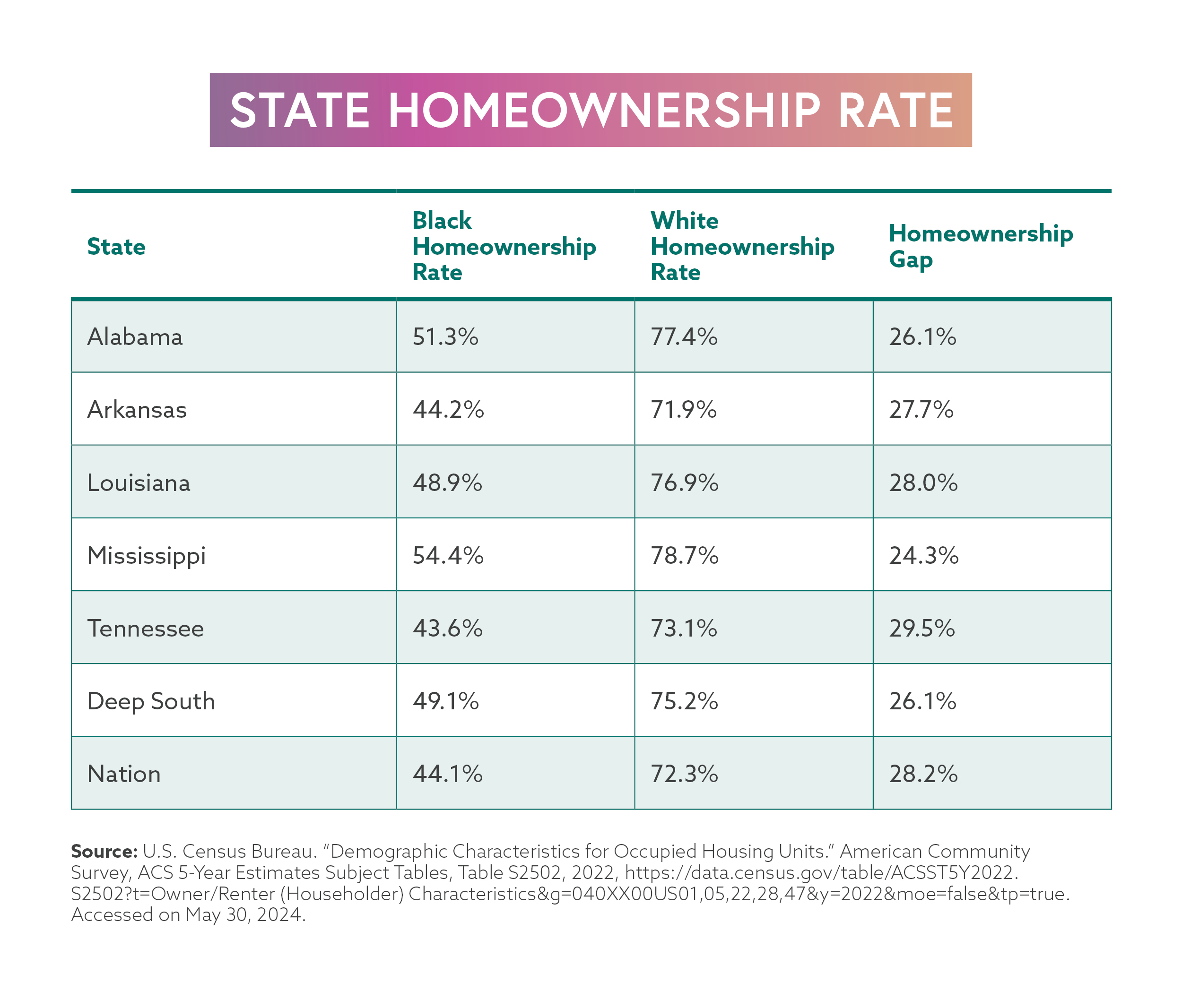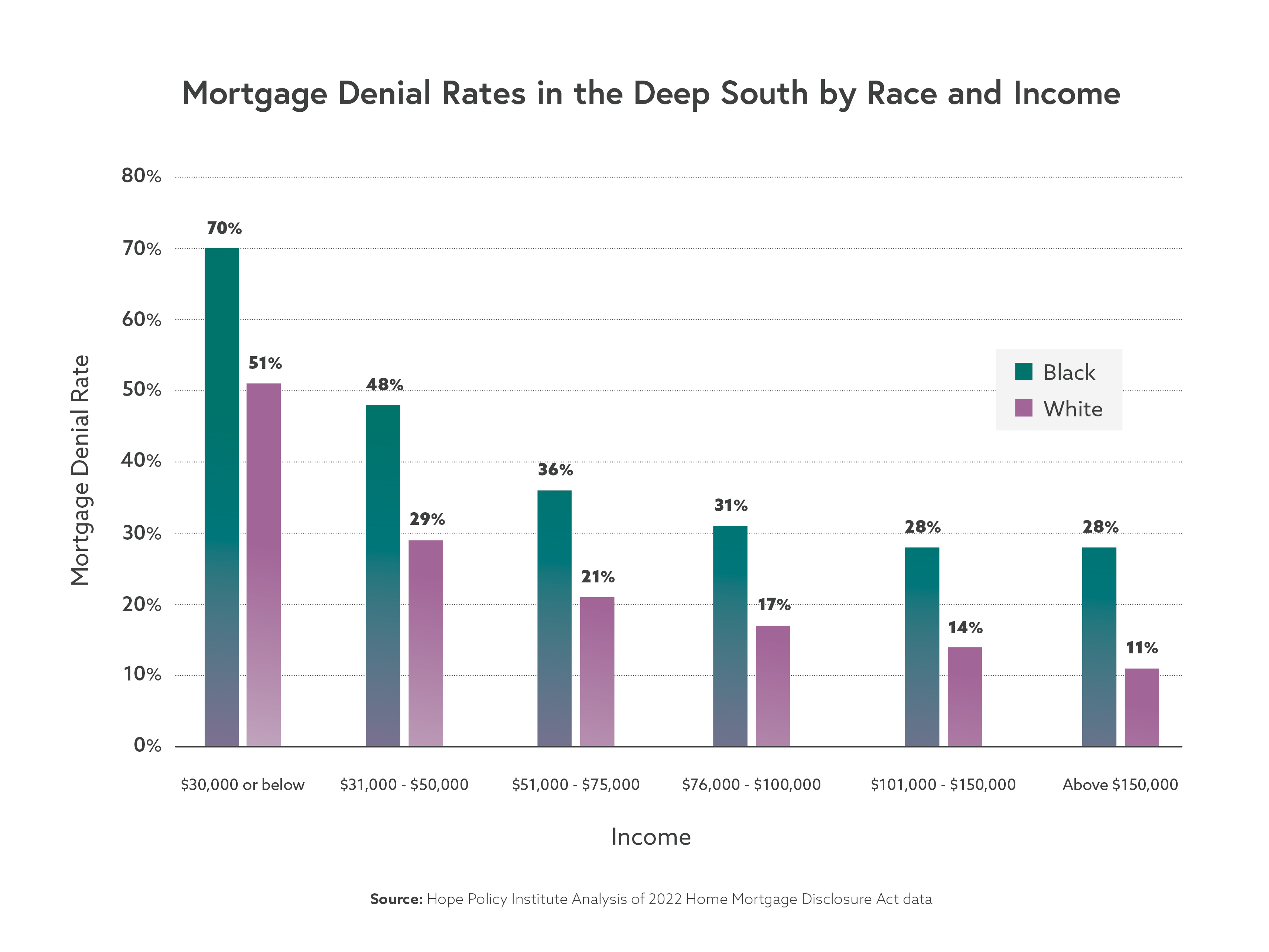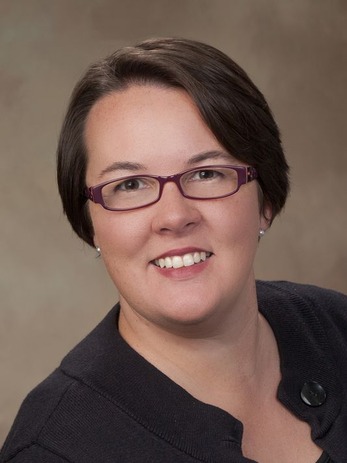Black Households Still Face Higher Mortgage Denials than White Applicants, Research Finds
June 7th, 2024
By Sara Miller, Sr. Policy Analyst
Homeownership is a proven strategy for building wealth yet access to mortgage financing is unequal, particularly for Black households. Black homeownership trails white homeownership by over a quarter percentage points (28.2% gap). There are 55 million more White homeowners than Black homeowners. Over three-quarters (75.2%) of white households are homeowners while less than half (49.1%) of Black households are homeowners. This disparity persists for each state within the Deep South.

Historic policies of housing and financial discrimination have excluded Black households from homeownership. Today, systemic inequities continue to exacerbate the racial homeownership gap.[1] There are several places throughout the homebuying process in which systemic failures arise, and financial institutions are central fixtures in improving or stifling access to mortgage financing.
An analysis of mortgage loan denial rates illustrates the failure of financial institutions to provide adequate access to mortgage financing. In 2022, the percent of loan originations for Black borrowers in Deep South states was 12%, noticeably lower than the 24% percent of Black residents represented in the population.[2] The mortgage denial rate for Black borrowers, conversely, is much higher, even when Black borrowers have significantly more income. The denial rate for Black borrowers in the Deep South earning more than $150,000 was almost equal to than for white borrowers earning between $31,000-$50,000. Denial rates were higher for black borrowers than white borrowers at every income level. In fact, the denial rate between Black and White applicants earning more than $150,000 is greater (2.5x) than the denial rate between applicants earning $30,000 and below.

The mortgage denial rates for Black applicants are higher for every income bracket than the previous year of data reported.[3]
While these structural barriers persist, they are possible to overcome. HOPE has established lending policies that have improved access to credit for borrowers of color and women. Over the last decade, HOPE’s mortgage portfolio more than quadrupled from about $34 million in 2010 to $144 million at the end of 2023, and the percent of mortgage loans originated for borrowers of color grew from 55% in 2007 to 90% in 2023. In 2023, 94% of loans closed were to first-homebuyers, and 90% of loans were to households of color.[4]
To do this, HOPE designed an in-house mortgage product, the Affordable Housing Program (AHP), to address many of the structural impediments created by the mortgage market. The AHP is one of the single most effective tools available to HOPE to build wealth in the Black community. Through the AHP, mortgages are manually underwritten, and nontraditional indicators of credit repayment history are considered. The product also discounts deferred student debt, does not require mortgage insurance, and accepts credit scores as low as 580. The credit score is of significance. Borrowers in rural areas are much less likely to have the credit scores typically required from banks to qualify for affordable mortgages than their counterparts in urban areas.[5] Also, of critical importance, the AHP allows for a loan-to-value (LTV) of 100% – eliminating down payment barriers as many low-wage earners have the cash flow for a monthly mortgage payment, but lack the ability to save for a down payment.
As federal policies contributed to the development of the homeownership gap and racial wealth gap, policy changes can also provide solutions for closing those gaps. One such policy is increasing support for Community Development Finance Institutions (CDFIs) and Minority Depository Institutions (MDIs) like HOPE that have a strong track record in providing mortgages to the underserved communities and that are located in these communities.
[1] Gibbons, A., Perry, A. M., Harshbarger, D., Ray, R., & Elizondo, S. (2021). “Homeownership, racial segregation, and policy solutions to racial wealth equity”. Brookings. https://www.brookings.edu/articles/homeownership-racial-segregation-and-policies-for-racial-wealth-equity/
[2] Hope Policy Institute analysis of data from the U.S. Census Bureau and Home Mortgage Disclosure Act data
[3] Miller, Sara.2023. “Black Households Face Higher Mortgage Denials than White Applicants, Research Finds”. http://hopepolicy.org/blog/black-households-face-higher-mortgage-denials-than-white-applicants-research-finds/
[4] Hope Credit Union. 2024. “Hope Impact Report 2023”. https://hopecu.org/manage/media/HOPE-Makes-It-Happen-2023-Impact-Report-Spreads.pdf
[5]Consumer Financial Protection Bureau. (2022). “Data Spotlight: Challenges in Rural Banking Access”. https://files.consumerfinance.gov/f/documents/cfpb_data-spotlight_challenges-in-rural-banking_2022-04.pdf






